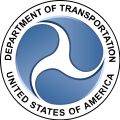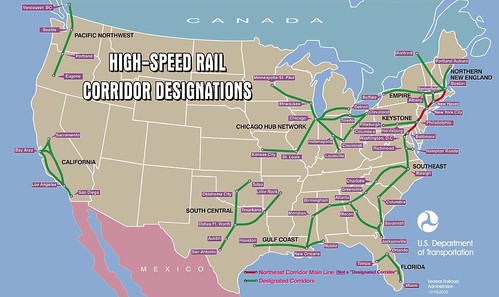Job Alert: Environmental Protection Specialist — U.S. Department of Transportation’s Volpe Center @ Cambridge, MA

- Image via Wikipedia
The Research and Innovative Technology Administration (RITA) seeks an experienced Environmental Protection Specialist to join the Energy Technology Division at the John A. Volpe National Transportation Systems Center (Volpe Center). The position is located at the Volpe Center in Cambridge, MA.
RITA coordinates the U.S. Department of Transportation‘s (DOT) research programs and is charged with advancing rigorous analysis and the deployment of cross-cutting technologies to improve our Nation’s transportation system. This is one of eight Centers of Innovation (COI) at the Volpe Center whose function is to undertake transportation policy analysis and research that contributes to a compelling vision of the 21st Century transportation enterprise and supports decision making in the development, management, operation, and financing of an integrated multimodal national transportation system that meets 21st Century mobility needs for goods and people.
Working within the Energy Technology Division, you will lead and collaborate in projects that directly impact the nation’s most important policies and programs related to transportation and energy. As part of our team, you will develop and analyze federal, state, and local policies and programs related to the transportation sector’s roles in energy distribution and consumption, and advise senior decision-makers on related matters; the primary focus of your work will be on the Energy Policy and Conservation Act (EPCA), the Clean Air Act (CAA), and Department of Transportation (DOT) authorization and funding acts.
In this role you will lead the development of model policies and programs for adoption and implementation at the state and local levels; lead the development of supporting analyses; and coordinate outreach to agencies through meetings, workshops, testimony, and other means. You will also facilitate negotiations and information sharing with affected industries; with officials from state, local, and international environmental, energy, and transportation agencies; and with environmental advocacy and other nongovernmental organizations.
If you are an experienced professional, and have the expertise and the desire to influence the direction our nation’s policies and programs, then this job is for you! You must have superb analytical, problem-solving and project management skills, and must be able to work in a collaborative and entrepreneurial environment. Writing samples will be required from all individuals identified as best qualified. (An Annual Financial Disclosure is required each year from the individual in this position.)
This announcement is posted under both Merit Promotion procedures and to the Public on www.usajobs.opm.gov. Applications will be accepted from current and former competitive service Federal employees, and people eligible under special hiring authorities. Please know that Merit Promotion announcements are the vehicle through which Federal employees generally apply for Federal positions.
- Merit Promotion (RITA.VOLPE-2010-0038): http://jobview.usajobs.gov/GetJob.aspx?JobID=90170019 (MERIT PROMOTION)
- Public (RITA.VOLPE-2010-0037): http://jobview.usajobs.gov/GetJob.aspx?JobID=90169910 (PUBLIC)
Informational briefing: Wednesday, August 25, 2010 from 11:00-12:00 p.m., Volpe Center, Cambridge (Conference Room: Building 1-3-45B; conference call no.: 1-877-336-1839; access code 6481986). Ryan Harrington, a senior technical staff member of the Division, will hold an information session at this time to describe the job and to answer any questions employees may have. Elizabeth León from Human Resources will be there to answer questions about the application process.
If you or someone you know has the experience and proven results, I encourage you or them to apply. We are looking for a diverse pool of qualified candidates.
Please contact Elizabeth León at elizabeth.leon@dot.gov or 617-494-2214 if you have any questions.









 President Obama and Vice President Biden spoke with Transportation Secretary Ray LaHood Tuesday at Transportation Department headquarters, where they announced the first batch of stimulus funds getting distributed. In an interview with The Wall Street Journal, Mr. LaHood talked about spending stimulus money wisely, his opposition to an increase in the gasoline tax, new fuel emission standards and more. Below are edited excerpts from the interview.
President Obama and Vice President Biden spoke with Transportation Secretary Ray LaHood Tuesday at Transportation Department headquarters, where they announced the first batch of stimulus funds getting distributed. In an interview with The Wall Street Journal, Mr. LaHood talked about spending stimulus money wisely, his opposition to an increase in the gasoline tax, new fuel emission standards and more. Below are edited excerpts from the interview.